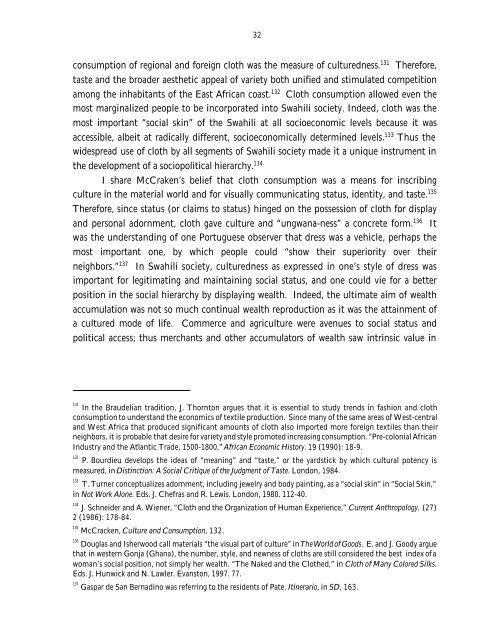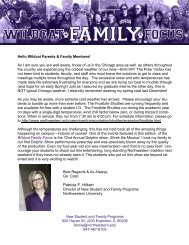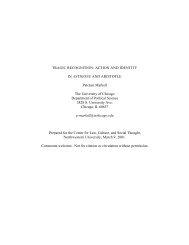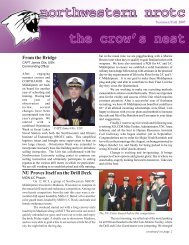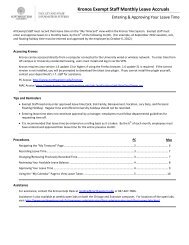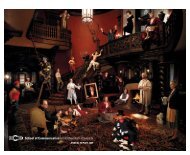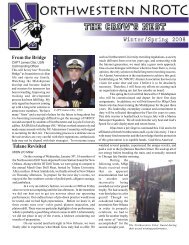Artistry Permits and Custom May Ordain - Northwestern University
Artistry Permits and Custom May Ordain - Northwestern University
Artistry Permits and Custom May Ordain - Northwestern University
You also want an ePaper? Increase the reach of your titles
YUMPU automatically turns print PDFs into web optimized ePapers that Google loves.
32<br />
consumption of regional <strong>and</strong> foreign cloth was the measure of culturedness. 131 Therefore,<br />
taste <strong>and</strong> the broader aesthetic appeal of variety both unified <strong>and</strong> stimulated competition<br />
among the inhabitants of the East African coast. 132 Cloth consumption allowed even the<br />
most marginalized people to be incorporated into Swahili society. Indeed, cloth was the<br />
most important “social skin” of the Swahili at all socioeconomic levels because it was<br />
accessible, albeit at radically different, socioeconomically determined levels. 133 Thus the<br />
widespread use of cloth by all segments of Swahili society made it a unique instrument in<br />
the development of a sociopolitical hierarchy. 134<br />
I share McCraken’s belief that cloth consumption was a means for inscribing<br />
culture in the material world <strong>and</strong> for visually communicating status, identity, <strong>and</strong> taste. 135<br />
Therefore, since status (or claims to status) hinged on the possession of cloth for display<br />
<strong>and</strong> personal adornment, cloth gave culture <strong>and</strong> “ungwana-ness” a concrete form. 136 It<br />
was the underst<strong>and</strong>ing of one Portuguese observer that dress was a vehicle, perhaps the<br />
most important one, by which people could “show their superiority over their<br />
neighbors.” 137 In Swahili society, culturedness as expressed in one’s style of dress was<br />
important for legitimating <strong>and</strong> maintaining social status, <strong>and</strong> one could vie for a better<br />
position in the social hierarchy by displaying wealth. Indeed, the ultimate aim of wealth<br />
accumulation was not so much continual wealth reproduction as it was the attainment of<br />
a cultured mode of life. Commerce <strong>and</strong> agriculture were avenues to social status <strong>and</strong><br />
political access; thus merchants <strong>and</strong> other accumulators of wealth saw intrinsic value in<br />
131 In the Braudelian tradition, J. Thornton argues that it is essential to study trends in fashion <strong>and</strong> cloth<br />
consumption to underst<strong>and</strong> the economics of textile production. Since many of the same areas of West-central<br />
<strong>and</strong> West Africa that produced significant amounts of cloth also imported more foreign textiles than their<br />
neighbors, it is probable that desire for variety <strong>and</strong> style promoted increasing consumption. “Pre-colonial African<br />
Industry <strong>and</strong> the Atlantic Trade, 1500-1800,” African Economic History. 19 (1990): 18-9.<br />
132 P. Bourdieu develops the ideas of “meaning” <strong>and</strong> “taste,” or the yardstick by which cultural potency is<br />
measured, in Distinction: A Social Critique of the Judgment of Taste. London, 1984.<br />
133 T. Turner conceptualizes adornment, including jewelry <strong>and</strong> body painting, as a “social skin” in “Social Skin,”<br />
in Not Work Alone. Eds. J. Chefras <strong>and</strong> R. Lewis. London, 1980. 112-40.<br />
134 J. Schneider <strong>and</strong> A. Wiener, “Cloth <strong>and</strong> the Organization of Human Experience,” Current Anthropology. (27)<br />
2 (1986): 178-84.<br />
135 McCracken, Culture <strong>and</strong> Consumption, 132.<br />
136 Douglas <strong>and</strong> Isherwood call materials “the visual part of culture” in The World of Goods. E. <strong>and</strong> J. Goody argue<br />
that in western Gonja (Ghana), the number, style, <strong>and</strong> newness of cloths are still considered the best index of a<br />
woman’s social position, not simply her wealth. “The Naked <strong>and</strong> the Clothed,” in Cloth of Many Colored Silks.<br />
Eds. J. Hunwick <strong>and</strong> N. Lawler. Evanston, 1997. 77.<br />
137 Gaspar de San Bernadino was referring to the residents of Pate. Itinerario, in SD, 163.


